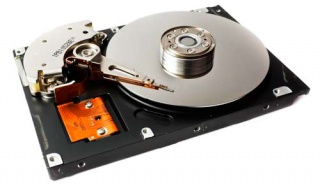P1 Page 2
Peripherals
Peripherals fall into two groups.
Which are:
-
Output devices such as a monitor, printer or plotter present the results of any processing to the user.
-
Input devices such as a keyboard, camera or scanner provide a way for the user to put data into the processor and to give commands (e.g. a pointing device like a mouse to click on the application you want to open, or to select an option from a menu).
According to their type (serial or parallel), input and output devices need to be connected to the processor using appropriate cabling (e.g. coaxial, optical, twisted pair) to an appropriate port; or configured as wireless devices.
Backing storage
There are three types of backing storage which are Primary storage, Secondary storage and Tertiary storage.
Primary Storage
The primary storage is located within the computer, is relatively small and the majority of it is lost when the computer is switched off.
Secondary Storage
secondary storage device or backing store is needed, such as a hard drive

Solid-state drive

SD card

DVD

Tape drive

USB thumb drive
CD

Floppy diskette

Hard drive
Tertiary Storage
secondary storage device or backing store is needed, such as a hard drive
Portable and fixed drives
In the design of early computers, the drives (i.e. the readers) were located within the casing. Hard disks were fixed within the casing but other media formats (such as magnetic tape and floppy disks) provided portable ways of storing data. More recently, external hard drives have been developed and this has brought with it the option to move a hard drive (and the hard disk within it) from one computer to another. Similarly, pen drives and card readers, both of which plug into the USB port, provide a portable solution to data storage. With the increased capacity and compact format of these devices, it is now possible to enjoy portability for large amounts of data.
